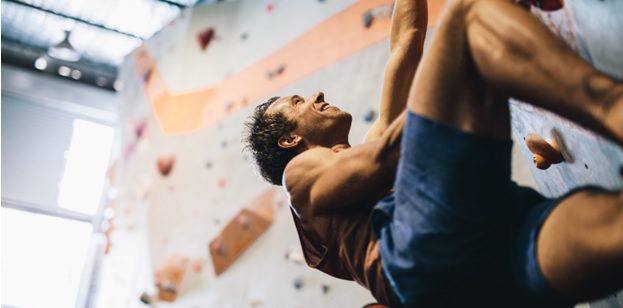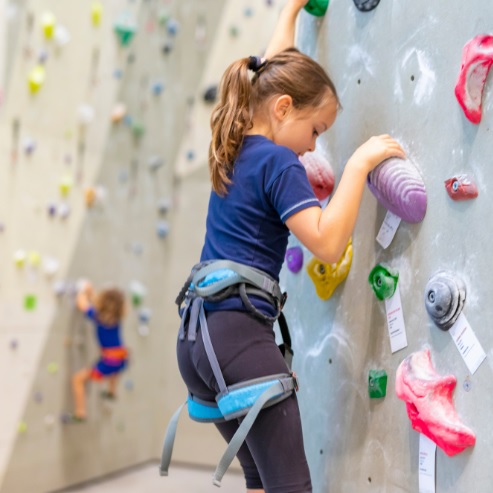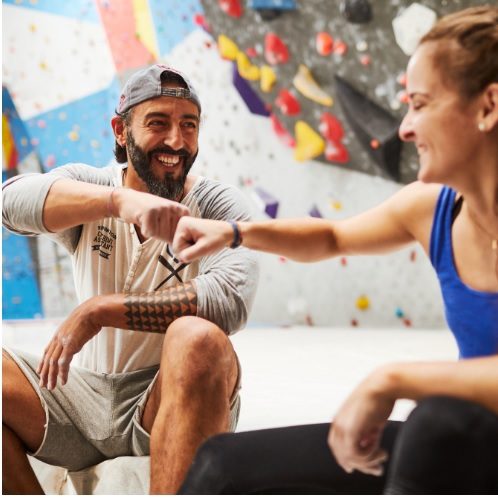
Rock Climbing Techniques: Mastering the Safe Descent
Ever found yourself hanging off a wall, adrenaline-rushing, unsure of your next move? Indoor rock climbing is all about stretching your limits and conquering those seemingly impossible routes. Yet, how often do we consider the way down? Falling safely and confidently is vital for every climber, and today, we’re diving deep into the essentials of mastering this art.
Why Is Falling Gracefully So Important?
Falling safely isn’t just about avoiding those pesky bruises or worse, it’s about enhancing your entire rock climbing experience. Let’s unpack the benefits:
Reducing Injuries: In rock climbing, gravity always gets the final say. It’s not about if you fall but when. A safe descent can be the difference between a minor hiccup and a major injury. Picture this: as you’re navigating a tricky route, your hand slips. Armed with the right techniques, you know how to minimize the impact, ensuring you bounce back quickly, ready for the next challenge.
Boosting Confidence: Let’s face it, the fear of falling can be paralyzing. But when you’re confident in your ability to fall safely, you become bolder, trying out routes that once seemed out of reach. Think of it this way: With your newfound falling expertise, even the most daunting climbs in Philadelphia become exciting challenges rather than obstacles.
Enhancing Performance: When the fear of falling takes a backseat, you’re free to concentrate on honing your climbing strategies. With no mental distractions, you climb smarter, making efficient and effective moves.

Crucial Techniques for Safe Falling
For every climbing enthusiast, knowing how to manage a fall is as important as mastering the climb. No matter your experience level, understanding safe falling techniques is paramount. Let’s dive deeper into the essential techniques that can be a game-changer for your climbing experience:
Spot Before You Drop: Before you even think of making that ascent, always scout out your potential landing zones. This isn’t just a tip for those in Philadelphia but for climbers everywhere. Being aware of your surroundings helps in dodging obstacles and ensuring a safe landing spot. It’s like checking the parachute before a skydive; you just gotta do it.
Stay Loose: You know what they say about cats always landing on their feet? It’s because they don’t stiffen up mid-air! Tensing up can lead to preventable injuries. So, channel your inner feline—keep those muscles relaxed and go with the flow.
Control the Drop: If you’ve been indoor rock climbing long enough, you’ll know those moments when the wall seems like your best friend. But here’s the thing, clinging to it during a tricky situation might not be the best idea. Opt for a controlled drop instead. This reduces the chance of scraping against the wall or getting tangled up.
Shield Your Essentials: Picture this: you’re at your favorite rock climbing spot in Philadelphia, and as you’re making your way up, you feel that slight slip. It’s instinctual to flail, but you’ve got to fight that urge. Prioritize protecting your head and limbs. A simple trick is to tuck your chin into your chest and keep those limbs reigned in. You’ll thank yourself later.
Breathe and Focus: This might sound simple, but it’s one of the most overlooked techniques. Taking a deep breath as you feel a fall coming can calm your nerves and give you a clearer perspective. Rock climbing can get intense, and keeping your composure during a fall is vital.
Stay Alert: Climbing walls, especially in popular spots like Philadelphia, can be busy. Always be aware of other climbers around you. If you sense a fall coming, a quick shout-out like “Falling!” can alert those below, ensuring their safety as well as yours.
Practice Makes Perfect: Just like any other skill, safe falling gets better with practice. Dedicate sessions to only practicing falls. The more you do it, the better you become. If you’re in Philadelphia, many rock climbing facilities offer safe falling practice sessions. Make good use of them!
Remember that there is more to climbing than merely the summit. It’s about the entire journey, ascents, and descents alike. So next time you’re geared up and ready for rock climbing in Philadelphia, keep these techniques in mind and stop by our facility. We have one of the most state-of-the-art rock climbing facilities in the area, and can help you master the descent – and everything else that goes into climbing!

Applying Techniques in Real-Life Scenarios
To visualize these techniques, consider some common indoor rock climbing situations:
Reaching the Summit: Once you’re at the top, before heading back down, scout the landing zone. Always communicate with those on the ground or your belayer for a safe descent. Imagine, after conquering a particularly challenging route, you use these techniques to ensure a smooth and secure way down.
The Unexpected Slip: When an unplanned slip occurs, keep your cool. Engage all you’ve learned about safe falling.
The Fatigue Drop: Long sessions can tire you out, and sometimes, letting go is smarter than pushing through. If you feel your strength waning, prioritize your safety by choosing to descend, avoiding strain and potential injury.
Elevate Your Rock Climbing Adventures Here in Philadelphia
Having the right falling techniques under your belt revolutionizes your indoor rock climbing experiences. It’s all about practice, consistency, and always being aware. As you sharpen these skills, not only will you be better prepared for risks, but you’ll also find yourself enjoying your climbs even more.
And for those in Philadelphia, Reach Climbing & Fitness is your go-to destination. With top-notch equipment and seasoned trainers, it’s the ideal place to polish those falling skills and take on exhilarating climbing challenges. Remember, safety first, always. Here’s to confident climbs and even more confident falls!


No Comments